#tomas saraceno
Explore tagged Tumblr posts
Photo
Artist: Tomas Saraceno

Palais de Tokyo
Paris, France
17K notes
·
View notes
Photo

North / Barbican / Barbican Art Gallery / Tomas Saraceno /... https://ift.tt/BFCH4wu Telegram: https://t.me/gdesignbot
33 notes
·
View notes
Photo
Galaxies Forming along Filaments, like Droplets along the Strands of a Spider’s Web
The word “network” has become a ubiquitous designation for technical infrastructures, social relations, geopolitics, mafias, and, of course, our new life online. [footnote Bruno Latour, Reassembling the Social. An Introduction to Actor-Network Theory (Oxford: Oxford University Press, 2005).] But networks, in the way they are usually drawn, have the great visual defect of being “anemic” and “anorexic,” in the words of philosopher Peter Sloterdijk, who has devised a philosophy of spheres and envelopes.[footnote Peter Sloterdijk, Sphären III – Schäume (Frankfurt: Suhrkamp, 2004) [partial translation: Peter Sloterdijk, Terror from the Air, trans. Amy Patton & Steve Corcoran (Los Angeles: Semiotext(e), 2009)]]; see also Peter Sloterdijk, “Foreword to the Theory of Spheres,” in Cosmograms, ed. Melik Ohanian and Jean-Christophe Royoux (New York and Berlin: Lukas and Sternberg, 2005) 223–241, see →.] Unlike networks, spheres are not anemic, not just points and links, but complex ecosystems in which forms of life define their “immunity” by devising protective walls and inventing elaborate systems of air conditioning. Inside those artificial spheres of existence, through a process Sloterdijk calls “anthropotechnics,” humans are born and raised. The two concepts of networks and spheres are clearly in contradistinction to one another: while networks are good at describing long-distance and unexpected connections starting from local points, spheres are useful for describing local, fragile, and complex “atmospheric conditions”—another of Sloterdijk’s terms. Networks are good at stressing edges and movements; spheres at highlighting envelopes and wombs.
Of course, both notions are indispensable for registering the originality of what is called “globalization,” an empty term that is unable to define from which localities, and through which connections, the “global” is assumed to act. Most people who enjoy speaking of the “global world” live in narrow, provincial confines with few connections to other equally provincial abodes in far away places. Academia is one case. So is Wall Street. One thing is certain: the globalized world has no “globe” inside which it could reside. As for Gaia, the goddess of the Earth, we seem to have great difficulty housing her inside our global view, and even more difficulty housing ourselves inside her complex cybernetic feedbacks. It is the globe that is most absent in the era of globalization. Bad luck: when we had a globe during the classical age of discoveries and empire, there was no globalization; and now that we have to absorb truly global problems…
Excerpt from Bruno Latour, Some Experiments in Art and Politics. Eflux, March 2011.
https://studiotomassaraceno.org/

Tomas Saraceno
23 notes
·
View notes
Text
MID
Aerocene – 2015
"Would you live in a floating city in the sky ?"

Aerocene est un projet crée par l’artiste Argentin, Tomas Saraceno, qui consiste à nous imaginer la possibilité d’exploiter les airs au moyen de « formes de structures aériennes mobiles » indépendamment des énergies non renouvelables. Ce projet a également pour objectif de nous questionner sur notre rapport à l’utilisation de l’espace aérien.
Mais alors comment apprendre à flotter dans les nuages ?


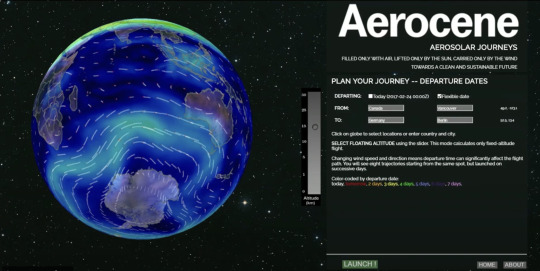


C’est la différence de température entre l’intérieur et l’extérieur du ballon qui lui permet de s’élever. L’emploi de moyens technologiques comme des capteurs sont utilisés pour percevoir et s’adapter au climat, à la température et à l’environnement. Un programme a également été développé pour définir les courant aériens et pour se déplacer.
"Parce que, dans ces excursions vers l’atmosphère, on n’est pas seuls. (…) Nous vivons au fond d’un océan d’air."
Ce projet innovant et engagé m’a tout de suite interpellé et questionné sur l’utilisation des ressources qui nous sont offerts. Dans ce cas-ci, l’emploi de technologies, a pour objectif d’imaginer une nouvelle ère, éco-consciente. C’est un pacte que l’on fait avec la Terre et un compromis éthique avec l’atmosphère.

2 notes
·
View notes
Text

tomas saraceno
sol/siège qui bouge avec les mouvements de chacun, où chacun essaie de trouver son équilibre
0 notes
Text
Like spiders, our personal webs are not static, independent spheres but fine instruments, interconnected to the vast network of our universe. Until some git with a vacuum cleaner comes along.


Tomás Saraceno: Particular Matter(s), free the air, how to hear the universe in a spider web.
https://studiotomassaraceno.org/
7 notes
·
View notes
Text
WEEK 2 - Artist Research

'Ponderosa Whirlpool' by Chris Drury (2018)
Drury's work mimics a natural form, the whirlpool, lending formal qualities of flux and movement. This is similar to my approach in the week 2 task, as I've attempted to imitate this state of flux with my use of intersecting planes/panels. In contrast to my work, the piece works in conjunction with the singular plane of the ground. This provides it with a weight that anchors the work and increases the affect of being drawn into its lower centre, as is characteristic of whirlpools. This work primarily makes use of natural materials consisting of raw wood and gravel. Though it appears that the area had to be cleared in order to make space for the work, the work's transience and ability to eventually biodegrade lend the work a semi-permanence that will not have a lasting impact upon the ecosystem that supports it.

'Cloud Cities: Species of Spaces and Other Pieces' by Tomas Saraceno (2024)
'Cloud Cities: Species of Spaces and Other Pieces' by Tomas Saraceno utilises conceptual balance rather than literal balance. Each prism provide the visual effect that they are stacked, balancing upon one another, whilst also remaining visually cohesive and drawing the viewers eye around the work rather than to a singular focal point. This is achieved through Saraceno's use of panelling and colour. The warm colours randomised across the work unifying each individual panel. The panels themselves are shared between the prisms providing the affect that the shapes are intersecting and becoming one. This is then further highlighted by the use of negative space, Saraceno leaving out panels to allows the viewer to see the inner workings and more closely observe the works intersections. Like my work, 'Cloud Cities' manipulates geometric forms to explore how intersecting planes can alter its affect. Another parallel that can be drawn between my work and Saraceno's is the structure's aim to serve a purpose beyond aesthetic concerns. The work has the potential to promote the nesting of native wildlife when placed outside of a gallery context.
0 notes
Text

Concept Board 3: A Room: Physical Footsteps and Space
White/clear string will wrap around and through crocs shoes so they hang to insinuate walking or taking steps forward. Each shoe will seem as if it is levitating above the ground but it is an illusion of footsteps. Every step we take in the present was possibly thought of in the past or planned for the future. The space underneath our steps are equivalent to the space in our journey through life. The crocs represents the modern steps we are taking in life, crocs are a modern traveling shoe that occupies minimal physical space. With every two steps we journey into something new that is invisible to us before we see it. The space emphasized underneath the shoes is the force we incur through life. My use of space is inspired by Tomas Saraceno’s spatial explorations and Tim Hawkinson’s kinetic sculptures, they both show how space can be manipulated to reflect balance and tell a story. Strings and shoes will be arranged to create interaction, suspension, and a sense of equilibrium, further showing the journey of taking steps forward.
1 note
·
View note
Text
Week 1 - Artist Research
Artist 1: ERNESTO NETO
Ernesto Neto is a Brazillian conceptual artist with the main focus on installations and sculpture. Neto is primarily influenced by nature and the human body, especially the skin, and his work always constructed with interaction for viewers. His works consist of fabrics, transparent, stretchy material, styrofoam pellets and fragants spices to create his installations (Tanya Bonakdar Gallery, n.d.).
One of his work that I impressed with called ‘Mother body emotional densities, for alive temple time baby son’ displays his combination of fabric and spices. The Lyrca polyester fabric has been used to create a skin-like appearance. Spices including annatto, clove, cumin, ginger, pepper, and turmeric are packed inside the skin bags (Tanya Bonakdar Gallery, 2016).
From the work title, I perceived fabric to be the skin of one mother who was flabby after giving birth and raising her children. Neto also experiments with gravity, dropping the skin bags from the ceiling and making it look heavy at the bottom highlighting a mother's physical and emotional densities. Also, the aromatic spices can evoke nostalgic, home-felt senses that bring visitors an engaging sensory experience.


Artist 2: TOMÁS SARACENO
Tomás is an artist informed by the worlds of art, architecture, natural sciences and engineering. His works invite viewers to conceptualise innovative approach of living and interacting with others, and with their surroundings. Spiders and their webs have been a major inspiration for his work as he is the first person to scan, reconstruct and reimagine spiders’ weaved spatial habitats. The reimagine of spider webs have been convey through an installation in his ‘Silent Autumn’ exhibition (Tanya Bonakdar Gallery, 2022).
Information about the material for this work have not been found, but when visitors touch the strings of the web, it will produce vibrations that echo spiderly modes of communication. The spider web in this installation is not just as a physical structure but as a musical instrument.
From my reading of this artwork, two meanings have been drawn. First, the interconnection of the strings expresses solidarity between human and non-human entities, fostering a sense of mutual respect and shared existence. Second, interaction with the work through sound and vibration mimics the non-verbal communication of spiders, this helps visitors realise that different species and cultures have different ways of understanding and interacting with the world.
This work is interesting as it engages visitors in a way that stimulates their senses and emotions, rather than just presenting visual information and constructing a very immersive art space.


REFERENCES:
Tanya Bonakdar Gallery. (n.d.). Ernesto Neto. Tanya Bonakdar Gallery. https://www.tanyabonakdargallery.com/artists/49-ernesto-neto/
Tanya Bonakdar Gallery. (2016). ERNESTO NETO: MOTHER BODY EMOTIONAL DENSITIES, FOR ALIVE TEMPLE TIME BABY SON | November 20, 2015 - February 21, 2016. Tanya Bonakdar Gallery. https://www.tanyabonakdargallery.com/exhibitions/229-ernesto-neto-mother-body-emotional-densities-for-alive-mca-san-diego/
Tanya Bonakdar Gallery. (2022). Tomás Saraceno. Tanya Bonakdar Gallery. https://www.tanyabonakdargallery.com/artists/28-tomas-saraceno/
0 notes
Text
Tomas Saraceno: Cloud Cities. Opening
youtube
0 notes
Text
Week 9 - Cultural Materialism
Being a phrase I have not heard of before, cultural materialism peaked my interest.
It's a way of looking at art that focuses on how they're made. It uses three ways:
1. Infrastructure- looks at how the tools, materials, and resources available influence the way things are created. Also considers how the environment impacts design choices.
2. Structure- looks at how societal organization and economic factors play a role in design. (example: availability of labor, resources, and the economic system can influence designs)
3. Superstructure- considers the beliefs, values, and symbols associated with designs. Also involves understanding how cultural ideologies and meanings are embedded in designs.

Cultural Materialism helps us designers see how different parts of society affect how things are designed. It shows how technology, money, culture, and design are all connected.
For the class activity, we were asked to pick 1 piece of infrastructure around us and answer the following questions for discussion.
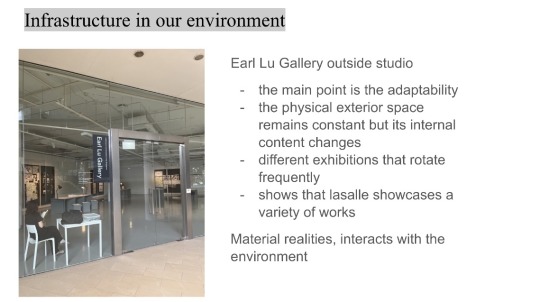

Our group chose the Earl Lu Gallery to discuss as it is not just a space to display artworks but it has elements that supports artists. They are essential in our cultural enviroment, a place for artists exhibition, for audiences to engage with art, and for various cultural activities.
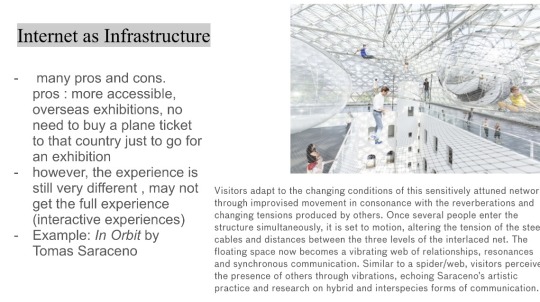

There are pros and cons to how phones affected our design experiences. For example, now we are able to experience exhibitions overseas virtually, which is a pro as it’s more convenient. However, it comes with limited engagement and definitely a loss of atmosphere.
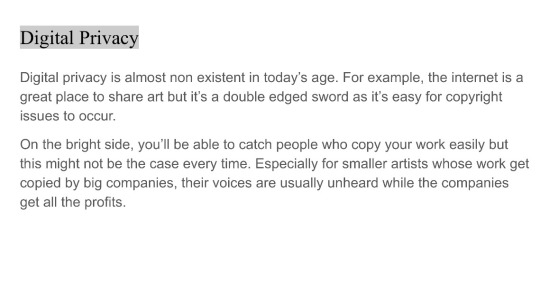

Seeing this question, we thought of copyright issues. Artists share their work, but with no privacy, big companies sometimes copy it without permission, leaving smaller artists unrecognized and unpaid.
(273 WORDS)
References:
Owczarek, Aleksandra. “Implementing Genuinely Sustainable Packaging in a Small Brand.” Packhelp, 19 Jan. 2024, packhelp.com/sustainable-packaging.
Daevas Inc. “Integration of Culture in Design.” Daevas Design, 12 Dec. 2016, daevasdesign.com/integration-culture-design.
Furuto, Alison. “‘In Orbit’ Installation / Tomás Saraceno.” ArchDaily, 15 Jan. 2018, www.archdaily.com/394622/in-orbit-installation-tomas-saraceno.
Jasani, Azmina, and Emelyne Peticca. “The Tension Between Copyright Law and Appropriation Art: Where Is the Line Between Artistic Innovation and Stealing?” The Art Newspaper - International Art News and Events, 29 Sept. 2021, www.theartnewspaper.com/2021/09/29/the-tension-between-copyright-law-and-appropriation-art-where-is-the-line-between-artistic-innovation-and-stealing.
0 notes
Text
READING REPORT AND ARTIST RESEARCH
For my research I focused primarily on books that explored nature and urban spaces. Therefore, I found particularly useful “Radical Nature: Art and Architecture for a Changing Planet 1969-2009” (2009) by Barbican Art Gallery, which explores the ways artists and architects can use to “promote, a new more radical, but still sympathetic, view of nature” (2009: 11)
Furthermore, I found resourceful reading “The Unofficial Countryside” by Richard Mabey (1973), where the focus is on the urban areas that have been covered with wildlife. These are areas that were not intended to be a resemble or copy of the countryside but however, nature, wildly developed through pavements and cement infrastructures within the city. These areas have in common the fact that the labels “rural” and “urban” don’t apply to them because they are neither of those. Therefore, the author states that the book can be read through two different perspectives: a negative one that see nature survive in opposition to Man, or a positive one that highlights a possible coexistence for the natural world to live alongside men. (1973: 12)
In “Radical Nature: Art and Architecture for a Changing Planet 1969-2009” it is stated that nature and men are commonly perceived as a binary opposition, as two elements that belong into different environments and spaces. In the past, for example in the Romantic period, nature had been described as idyllic and unreachable power, able to subjugate men. However, with urbanisation and developing technologies, men seem to have out powered nature that is now regarded as a distant world with which men have lost contact and intimacy. This lack of coexistence and malleability between the two resulted in an extreme incompatibility, which has been worsening in recent decades. Some examples could be climate changes, the ozone depletion, the growing number of endangered vegetal and animal species, the elevation of seas’ levels and many more. (2009: 9)
However, in 1960s and 1970s, the first ecological movements and protests raised awareness about environmental and ecological issues, which were followed by an artistic response to try and solve or mend the problem. Ecological activism therefore brought a new understanding on how architecture’s relationship to nature should be more intertwined by considering urban spaces’ impact on natural resources and energies.
In the book are cited two examples of eco art and environmental art vanguardists groups, such as Ant Farm and Haus Rocker Co. Both believed and showed through their art how infrastructures divide men from nature, therefore their purpose was “to restore our bond with nature”. (2009:10)
Ant Farm was a collective that developed in San Francisco between 1968 and 1978, their mission was to develop and research new and alternative ways to explore architecture and environmental design. Their first projects, like “Clean Air Pod” was an inflatable structure that was meant to draw attention to the growing levels of pollution. (2009: 48)
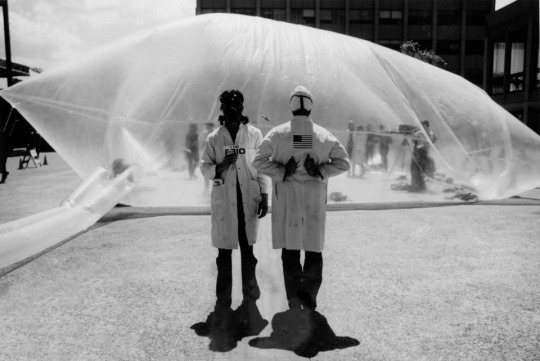
In their last years Ant Farm upgraded its research to seek a harmonious co-existence and co evolution between humans and the natural world, and it led them to the Dolphin Embassy. A project that was formed around a new floatable structure that was self-sustainable and that permitted interspecies communication to promote a campaign of equality between dolphins and human.
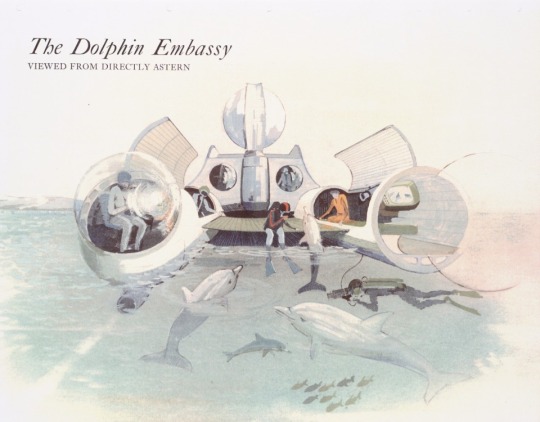

While reading the book, which presents many astonishing artists, I found more adequate to my research, Tomas Saraceno and A12. The former was inspired by Richard Buckminster Fuller, who was a visionary architect. Fuller used to invent and plan utopic habitable domes that, could cover kilometres of land by shielding entire buildings, however his ideas got even more surrealistic and visionary with the project Cloud Nine. Cloud Nine promoted airborne spherical cities to float above land, and they were great examples of “dymaxion”, a term that Fuller coined himself: a dymaxion is a structure which has reached the dynamic maximum tension, which is a principle that strives for the adaptability of structures to different environments while using sustainable resources and energies. (2009: 72)
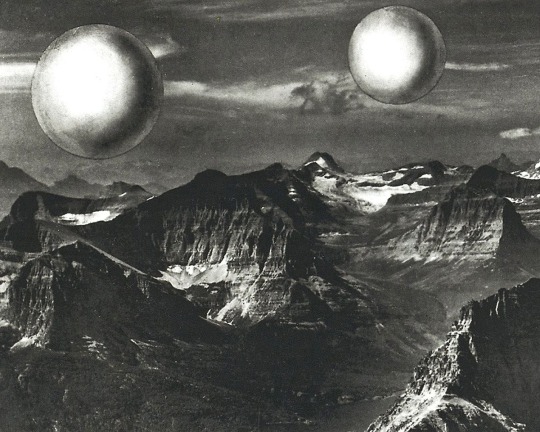
Tomas Saraceno has then taken this concept and applied it to his “Airport City” a utopian modulator flying cell of airborne bubbles that use solar energy to float in the atmosphere. This agglomeration of cells is meant to represent a city that goes beyond the urban sprawl and satisfies the principles of Yona Friedman Spatial City and Soleri’s three dimensional urban spaces. (2009: 200)
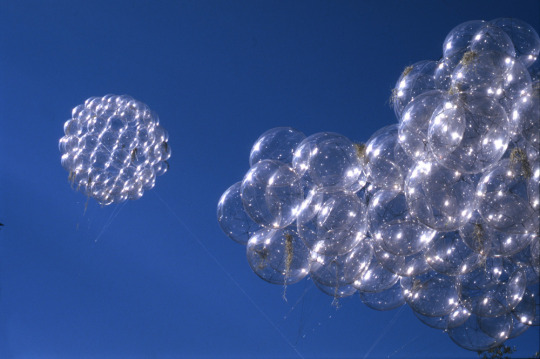
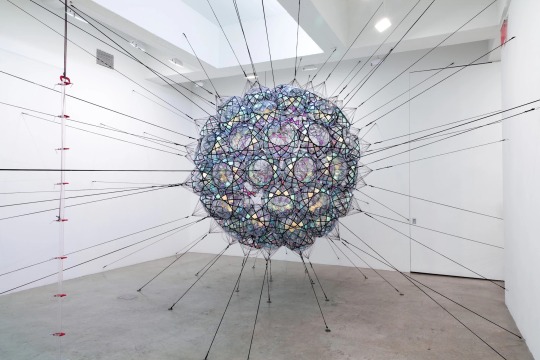
As I mentioned, the work of A12 also got my attention. A12 is an Italian collective founded in 1993 in Genoa. I am particularly interested in how their art revolves around architecture and how they studied the transformation of cities and the green areas within them. A12 created contemplative zones within urban spaces, in which nature is re-imagined and then integrated in the city walls. For the Venice Biennale A12 set a temporary pavilion adorned with vegetation and surrounded by red walls and pavement. (2009: 32)
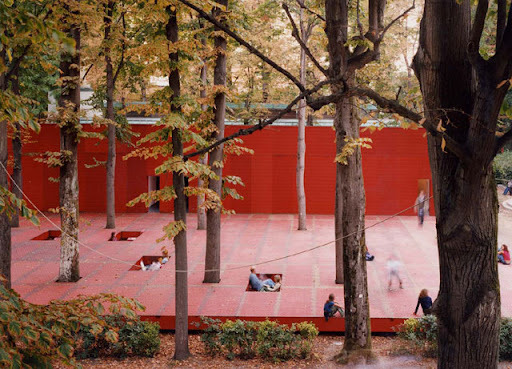
Their project reminded me of what Mabey was writing in his book: “Cities should be bursting with trees; they should surround every drab playing field and rubbish dump. They should line roads and range along the middles of dual carriage ways”. (1973:99)
Richard Mabey explores parks and garden as representative of a sort of urban countryside. Both parks and garden are “deliberate attempts” at creating an image of country within the city. The author, however, criticize the rigor and tidiness that is characteristic of many parks.
“The trees, If the pruned and emaciated shrubs that are planted in these places can be called trees, march on lines as regular as if they were in a nursery. The natural world, mercifully, does not work by rules as rigid and soulless as these - and which even we, as biological creatures ourselves at heart, go out into the countryside to escape. Birds sing in the warm weather and work hard for food in the cold. Flowers open their petals up altogether when the sky is overcast. Neither hunting foxes nor migrating birds have any respect for night-time curfews. Nor does anything in nature grow in straight lines. A bank of wildflowers will gush forward in one place, cower in a second and rocket inexplicably towards the heavens in a third. A man is no different. Ask him to walk in as straight line as he can muster between two landmarks in a grassy meadow, and the track he leaves will be as softly curved as a bend in a stream. There is no need for these life reflecting qualities in a park. A park managed like this is little more than an estate where the building materials just happen to be living, forcibly kept in a state of permanent hibernation.” (1973: 88)
According to Mabey, parks and their wildlife should follow their natural course so that natural and animal species can proliferate as would happen in a forest or countryside. If parks are exuberantly well kept, their trees’ leaves swept rigorously and wildflowers eradicated, then parks are reduced to mere aesthetical areas and they become another artificial segment of the city, underlining the growing distance between men and the natural world.
Reference
Mabey, R. (1973) The unofficial countryside. London: Collins.
Radical nature : art and architecture for a changing planet 1969-2009. (2009). London: Barbican Art Gallery/Koenig Books
Presentation:
https://livemdxac-my.sharepoint.com/:p:/g/personal/sd1513_live_mdx_ac_uk/ETpORJ0bbpFBoYgWzCqlNVwBGjZ2kU913qtiIDU_kvBa8w?email=L.White%40mdx.ac.uk&e=0i3edw
0 notes





